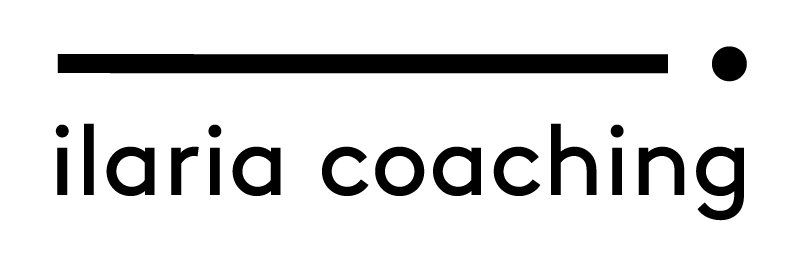COMPETENCY-BASED INTERVIEWS, or behavioural interviews: what are they?
In this type of interviews the questions are designed to prove our ability to perform effectively in specific situations.
We are required to demonstrate our skills by providing concrete, structured and relevant examples of real situations we faced in the past.
The objective is to determine how we will act in the future based on how we acted when faced with similar circumstances in the past.
Questions are usually related to the competencies and responsibilities listed in the role profile: it is recommended to start your preparation from the role description. Predictability means we can focus our preparation on specific competencies. However, it also means there are no excuses for lack of preparation.
Depending on the role you are applying for, you may be required to take technical or language skills tests, or to prepare a presentation.
The topic of the presentation may vary, depending on the role. For example, leadership related roles may require you to present a 30-60-90 days Action Plan, while marketing related roles may focus on market segmentation, customer surveys, promotional campaigns, etc.
The three pillars of effective preparation
KNOW THE COMPANY
Research information about the company’s current and future strategies. The company website (About us) is a good place to start from.
• What are the company’s values? How are you going to honour them? • How is the Industry performing?
KNOW THE ROLE
Identify the key skills and competencies required by the role.
• What are the expectations?
• Have you performed the same or similar tasks in the past?
KNOW YOUR CV
You may have sent different tailored CVs to different companies: prepare on the right CV. Be prepared on your LinkedIn profile too: it might slightly differ from your tailored CV.
How to prepare your answers
PREPARATION IS KEY: brainstorm relevant examples. Be specific: look for real situations you faced in the past.
While preparing for the interview it is useful to write down all past examples you can think of. If you are currently working consider writing down examples of situations as they happen in work.
Look for achievements you are proud of and related transferable skills. Look for successful projects you worked on.
Also, look for times when things did not go as planned. Be ready to describe how you reacted to constructive feedback and how you acted on it. What have you learned?
BE STRUCTURED: FOLLOW THE S.T.A.R. MODEL
The ability to explain a complex situation in a logical and simple way shows effective communication skills.
‘If you can’t explain it simply, you don’t understand it well enough.’ Albert Einstein
When answering an interview question it is important you follow a clear structure. You want to demonstrate you are a clear communicator. The S.T.A.R. model is a very common technique to support structured answers.
Practise your answers: rehearse out loud
We spend a considerable amount of time looking for specific and relevant examples. We focus on writing down and structuring our answers. However, most of the time that’s all we do and everything stays in our head: we rarely get to hear how our answers sound before the day of the interview.
Rehearse your answers out loud: you will feel more prepared.
Is your terminology professional? Are you clear and concise? Is your answer structured?
Do you smile? Please remember to smile.
When we are nervous we tend to forget about it.
A positive body language and effective overall verbal and non-verbal communication will make a real difference.
Research shows that when what we say (words) is consistent with how we say it (tone and body language) our message is congruent and becomes 100% believable (Albert Merhabian Communication Model).
You could record yourself with your phone for example: you will become more aware of your pace, tone of voice and body language. Focus on: hand gestures, eye contact, facial expressions, posture, pausing.
Are you using fillers (e.g.: ‘eehh’, ‘um’, ’like’, ‘you know’, etc…)?
Fillers are a distraction: become aware of your fillers and start minimising them. How?
You could pause more between concepts and use silence instead of fillers, still speaking with energy and enthusiasm.
A focused preparation will increase the awareness of your own strengths, your confidence level, and will support effective answers to both predictable and unexpected interview questions.
What about Career-related question?
While writing your Cover Letter you looked for milestones that influenced your decisions and steered your career towards where you are now.
Recruiters and hiring managers read your Cover Letter…and now they want to know more!
Keep implementing the Storytelling technique while answering career-related questions: expand on the information you shared in your professional documents (CV, Cover Letter and LinkedIn profile – About section). Be consistent and prioritise information based on the requirements of the role you are applying for.
Position yourself effectively by highlighting how your academic and professional journey have contributed to your experience and skillset.
Attitude is key
Focus on positive self-talk:
Focus your thoughts on what you do well, on your strengths and abilities, and on your achievements so far. Be your own coach and commit to be your best supporter before and after the interview.
Be your best friend:
Please remember to take care of yourself. Especially while we prepare for an important event we may feel anxious, our confidence level may suddenly drop and we tend to forget our successes so far. Support your body and your mind: eat healthy, stay hydrated, exercise if you can, rest and dedicate some time to relax. This will help your ability to keep things in perspective and to concentrate when most needed.
Demonstrate effective communication skills
- Structure your message logically
- Connect with your audience emotionally
- Articulate your objective clearly
- Demonstrate you walk the talk, consistently


